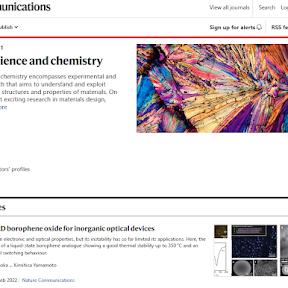トピックス
Nature CommunicationsのEditors' Highlightsに特集されました
2022.03.26
2022年2月に掲載されたホウ素二次元液晶に関する論文がNature CommunicationsのEditors' Highlightsに特集されました。
東工大ニュース化学工業日報「ガリウム原子13個クラスター」
2020.02.26
Adv. Mater.誌に掲載された「ガリウム原子13個クラスター」に関する記事が2月26日発行の化学工業日報(4面)に掲載されました。
化学工業日報 (2020年2月26日 4面)
化学工業日報「超原子を液相法で合成」
2017.12.12
Nature Communications誌に掲載されたAl13超原子の液相合成に関する記事が12月12日発行の化学工業日報(1面)に掲載されました。
東工大ニュース
Nature Communications
化学工業日報 (2017年12月12日 1面)
Al13−超原子の液相合成
2017.12.11
T. Kambe, N. Haruta, T. Imaoka, K. Yamamoto
Nature Commun. 2017, 8, 2046.
超原子、すなわちそれらが構成される元素とは異なる特性を模倣するクラスターは、調整可能な特性を持つ前例のない材料の構築ブロックとして機能する可能性がある。超原子の溶液相合成法の開発は、この研究分野の将来の進展に不可欠な成果となるであろう。ここでは、デンドリマーテンプレートを用いて溶液中でアルミニウムクラスター(最もよく知られたスーパ―アトムであるAl13−)を生成する方法を報告する。Al13−クラスターは、質量分析および走査透過型電子顕微鏡を使用して同定され、X線光電子分光法により結合エネルギーが測定される。Al13−の超原子安定性は、その酸化傾向を評価することで示される。さらに、溶液中でのAl13−の合成は電気化学測定を可能にし、その結果はAl13−の酸化を示唆している。この溶液相合成法は、クラスター科学の実験的発展において重要な役割を果たす。
Solution-phase synthesis of Al13− using a dendrimer template
Superatoms, clusters that mimic the properties of elements different to those of which they are composed, have the potential to serve as building blocks for unprecedented materials with tunable properties. The development of a method for the solution-phase synthesis of superatoms would be an indispensable achievement for the future progress of this research field. Here we report the fabrication of aluminum clusters in solution using a dendrimer template, producing Al13−, which is the most well-known superatom. The Al13− cluster is identified using mass spectrometry and scanning transmission electron microscopy, and X-ray photoelectron spectroscopy is used to measure the binding energies. The superatomic stability of Al13− is demonstrated by evaluating its tendency toward oxidation. In addition, the synthesis of Al13− in solution enables electrochemical measurements, the results of which suggest oxidation of Al13−. This solution-phase synthesis of Al13− superatoms has a significant role for the experimental development of cluster science.
Bismuth Complexes in Phenylazomethine Dendrimers: Controllable Luminescence and Emission in the Solid State
2016.09.22
T. Kambe, A. Watanabe, T. Imaoka, K. Yamamoto
Angew. Chem. Int. Ed. 2016, 55, 13151-13154.
Dendritic phosphors were obtained by the stepwise integration of BiCl3 in phenylazomethine dendrimers. The bismuth-coordinated phenylazomethines displayed photoluminescence at 500–800 nm, and the intensity could be tuned by changing the stoichiometry of BiCl3 and the dendrimer. This phosphor did not show serious luminescence quenching even though the local concentration of BiCl3 in the dendrimer was as high as 20 M, and luminescence was also observed in the solid state. The absorption and emission properties could be reversibly switched by addition of a Lewis base or under electrochemical redox control, which induced the reversible complexation of BiCl3 in the dendrimer.









